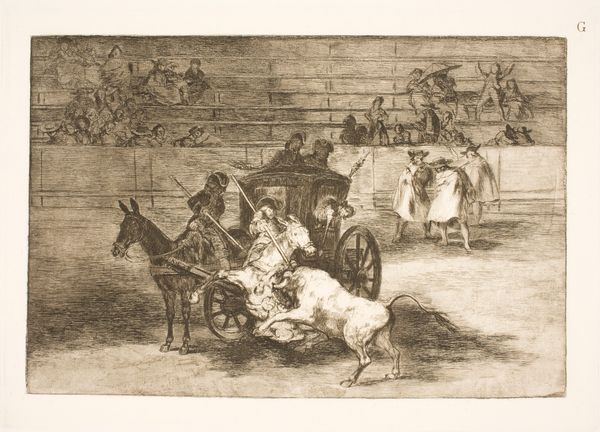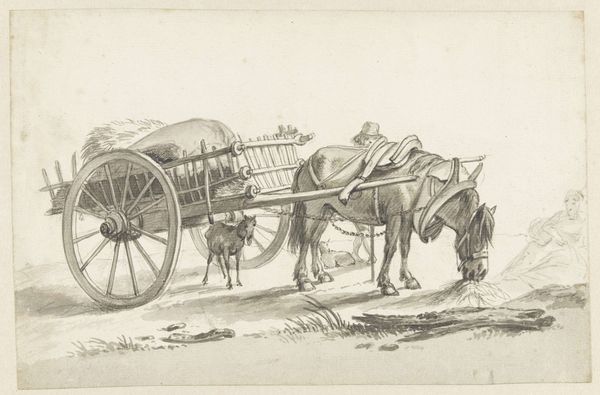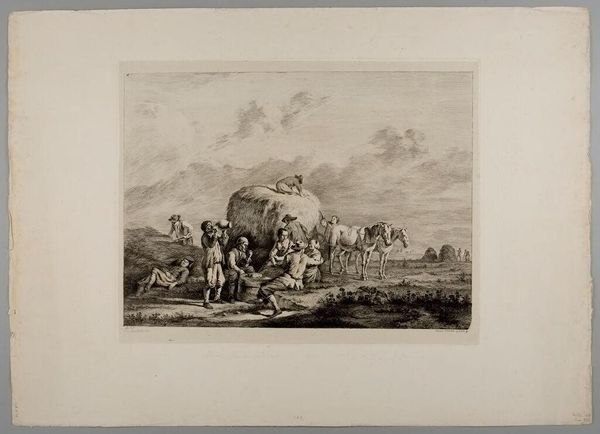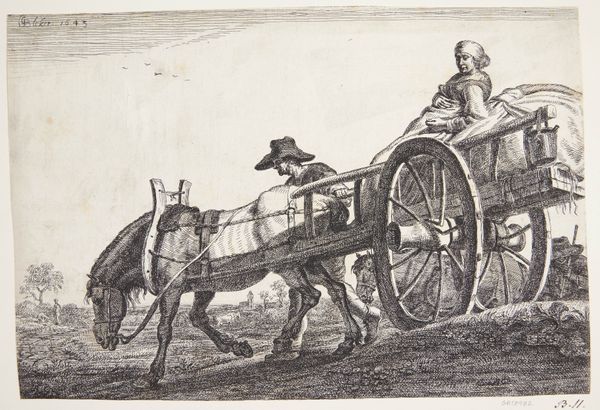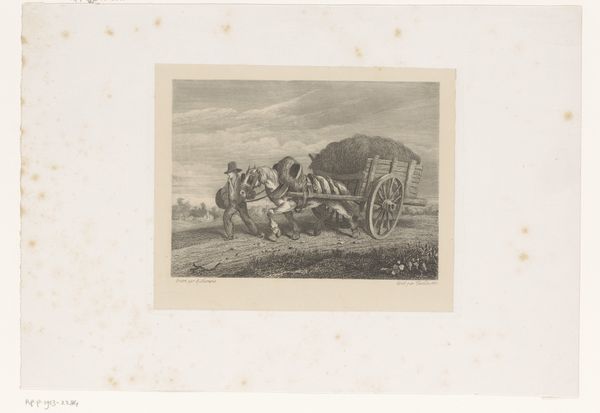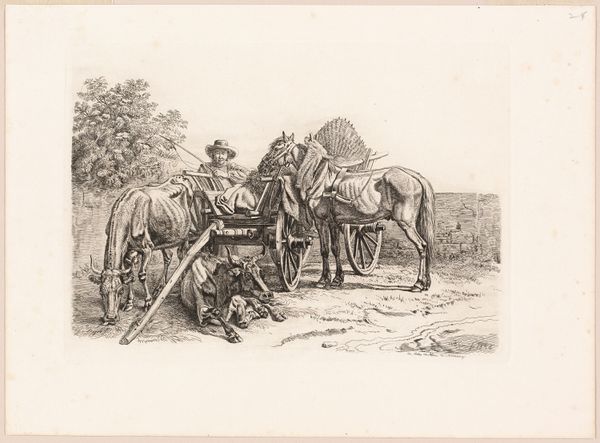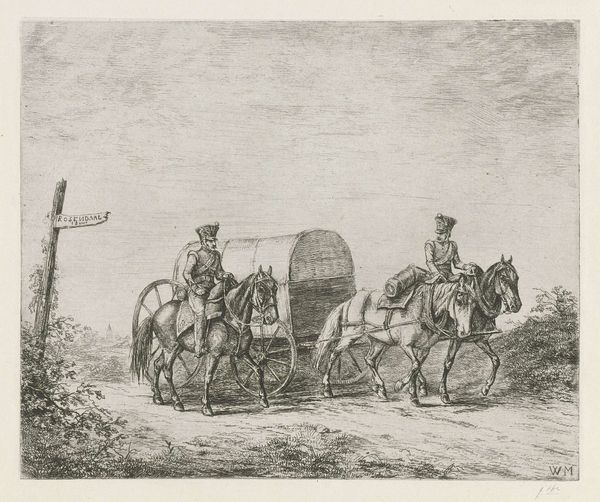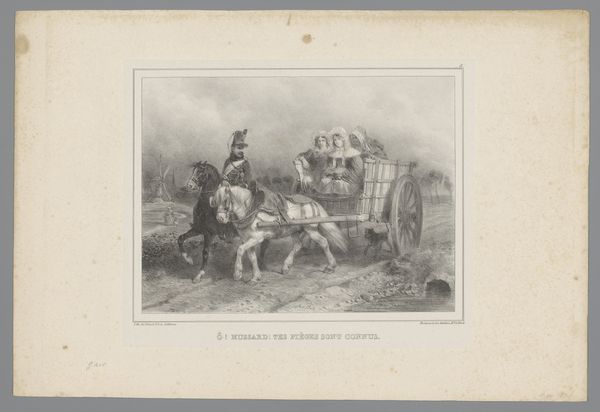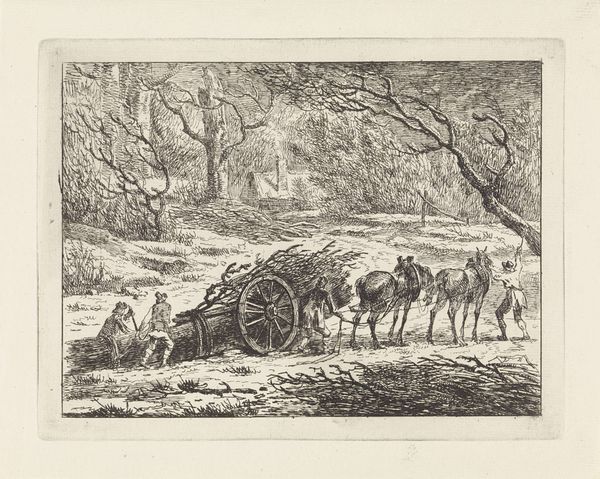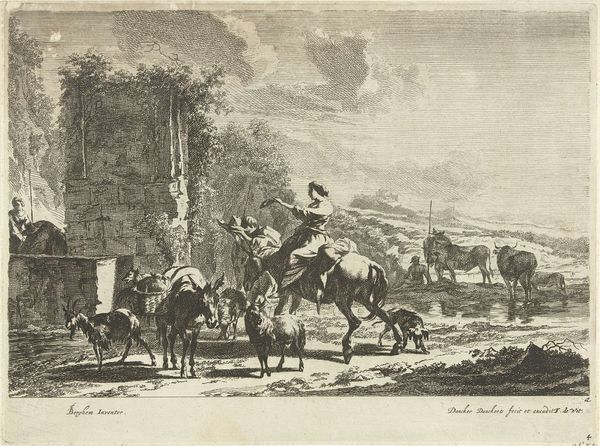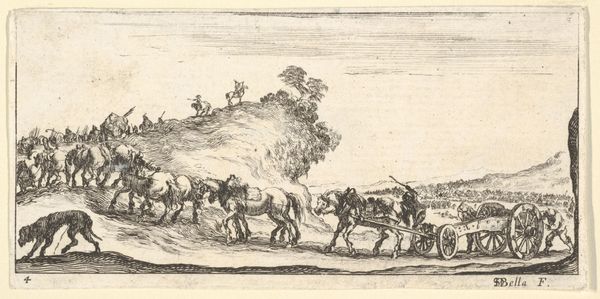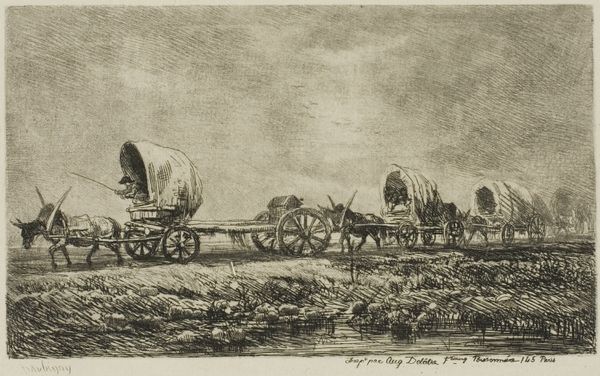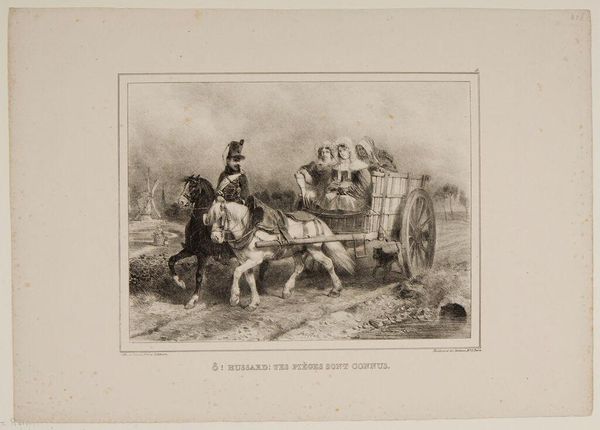
The Coal Wagon, plate 7 from Various Subjects Drawn from Life on Stone 1821
0:00
0:00
drawing, lithograph, print, paper
#
drawing
#
lithograph
# print
#
landscape
#
paper
#
romanticism
#
france
#
genre-painting
#
realism
Dimensions: 195 × 311 mm (image); 314 × 447 mm (sheet)
Copyright: Public Domain
Curator: Here we have "The Coal Wagon, plate 7 from Various Subjects Drawn from Life on Stone," a lithograph by Théodore Géricault, created in 1821. Editor: It's so evocative. I'm immediately drawn to the raw, almost desperate energy radiating from those horses. You can feel the weight, both literal and metaphorical, of that wagon. Curator: Absolutely. Géricault was a master of Romanticism, imbuing everyday scenes with profound emotion. The wagon, heavily laden, and the straining horses certainly tap into the period's interest in the sublime. Editor: There's a clear social commentary, too. These working horses and the person riding on the coal become potent symbols of labor and social class in the early 19th century. The lithograph feels very immediate; how was it received at the time? Curator: Géricault's prints offered a contrast to the idealized visions then common, and some critics praised him for realism, while others critiqued its unflattering depiction of labor. The medium of lithography also played a significant role. It made art more accessible, furthering public dialogue. Editor: And that accessibility connects with the theme, doesn’t it? This scene isn't grand history, but rather a glimpse into working life. You almost feel transported to that landscape. What about the figures themselves? The driver looks oddly positioned. Curator: Indeed, and it subtly underscores a symbolic meaning. The person is passively placed atop the coal. Almost an additional cargo rather than a figure in control. A potent visual statement about the burden of labor, echoed in the exhausted stance of the lead horses. Editor: Looking closer at their faces, it appears Gericault may have also studied equine anatomy intensely, portraying the muscular exertion and bone structure. It elevates them beyond mere work animals. Curator: That intensity exemplifies Géricault's dedication. He sought to capture the spirit of his subjects. As an iconographer, I see how the symbolism becomes complex with readings of progress versus exploitation, visible especially to today's audiences, given ongoing struggles. Editor: Seeing it today, within our own historical and political context, does make it more affecting. It's a simple image, yet rich with symbolic, lasting power. Curator: It does invite us to consider the complex social and cultural landscape surrounding the creation of this scene. Editor: Precisely. Géricault made us look directly at realities, forcing society to engage.
Comments
No comments
Be the first to comment and join the conversation on the ultimate creative platform.
